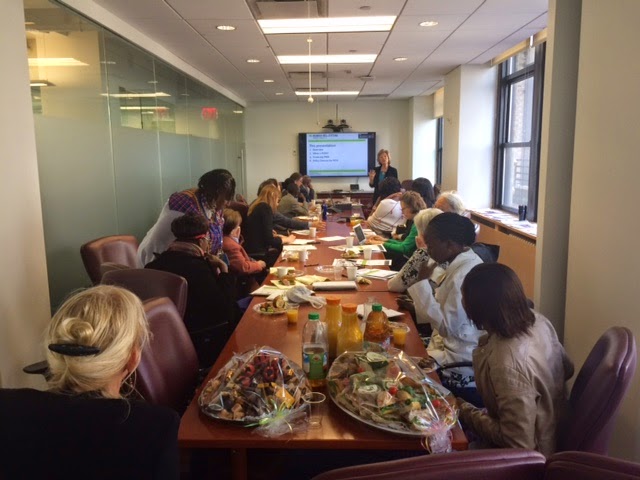On 21 April during the 14th Session of the Permanent Forum on Indigenous Issues, Natural Justice and the LAPSSET Community Forum (LCF), with the support of the American Jewish World Service and the Heinrich Böll Foundation (HBF), organized a side event entitled: A New Infrastructure Boom in Africa: Community Responses to the Lamu Port and Southern Sudan-Ethiopia Transport Corridor (LAPSSET). Using Kenya as an example, the side event aimed to shed light on the uphill battles that communities often face in light of increasing infrastructure investment in Africa. While the impacts of infrastructure are felt locally, much of the planning occurs through large portfolio infrastructure investments supervised by regional or global partnerships beyond the reach of communities affected by their decisions.
During the side event Kanyinke Sena from the Community Legal Resource Center, Kenya introduced LAPSSET, noting that four to five countries in East Africa are fundraising for the project, and that conflicts over land are some of the most critical issues that will result from LAPSSET development. Omar Mohamed Elmawi from LCF then presented, expanding on Kanyinke’s introduction by emphasising the impact of LAPSSET on the communities in the Lamu archipelago. He also noted that while communities along the entire corridor face many challenges, they can join together through the LCF to share information and experiences, and have a bigger voice in the process. Finally, Nancy Alexander from HBF USA provided further analysis on the global infrastructure investment climate with a particular focus on Africa, including the Programme for Infrastructure Development in Africa (PIDA). Nancy noted that while investors often have difficulty with a rights-based discourse, they do understand the language of risk. Couching issues affecting communities in terms of risk to investments is one potential avenue for increasing community voices in the development of infrastructure.
The side event ended with participants, including indigenous peoples affected by LAPSSET, sharing further experiences and insight to the nature of infrastructure investment in Kenya and beyond. It became apparent that analysing the LAPSSET corridor from its impact on the local level to the international investment landscape behind its financialisation was useful to put into perspective the vast uphill battles indigenous communities face when affected by infrastructure projects and discuss the myriad of strategies needed to get their voices heard.










